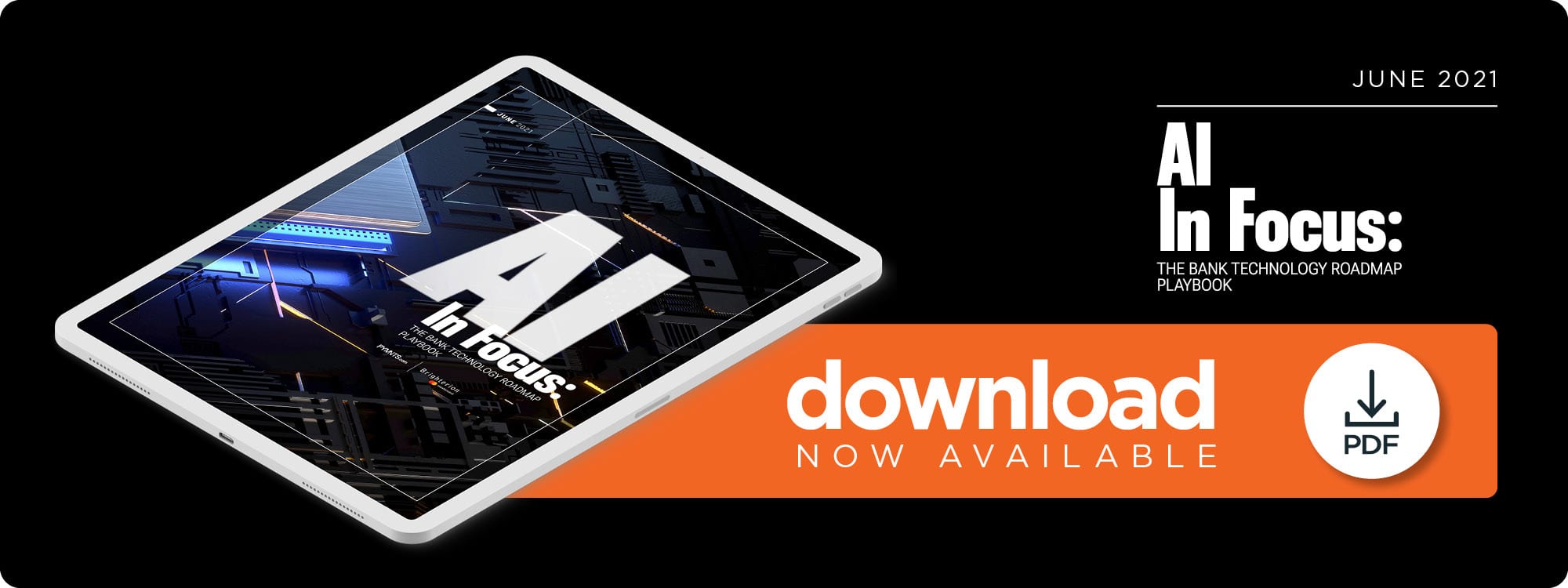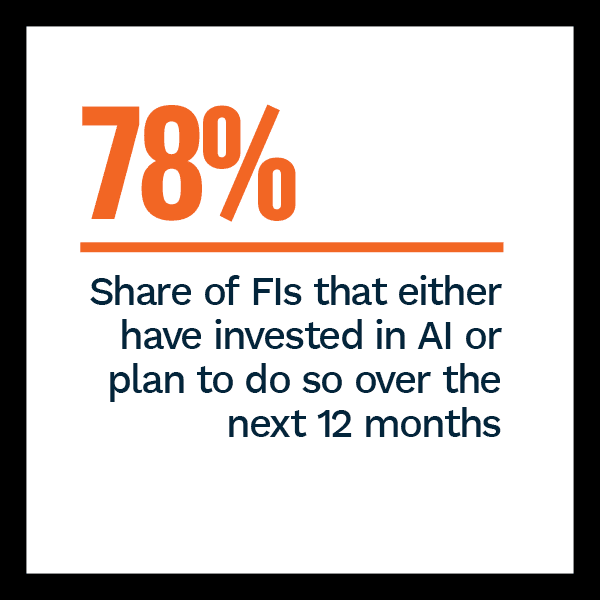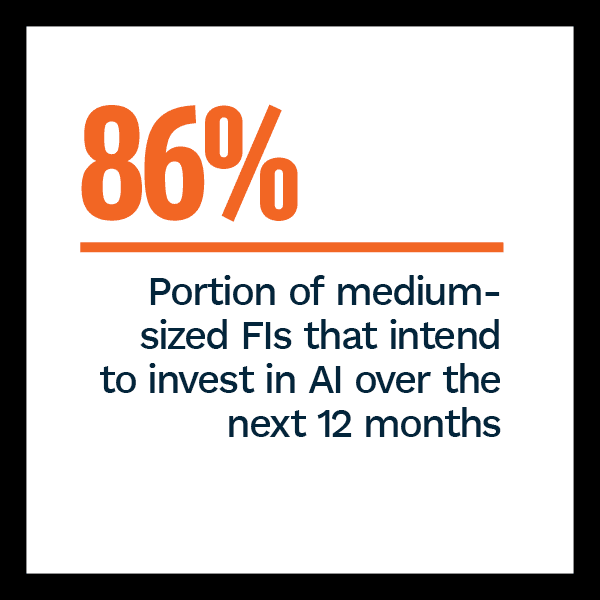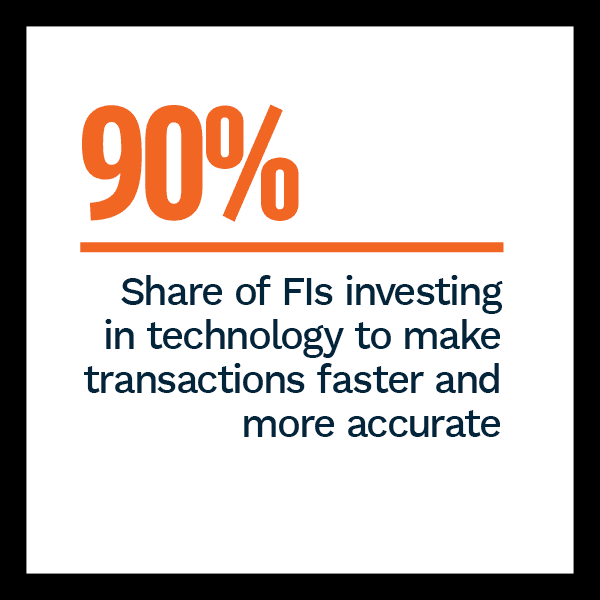NEW REPORT: Five Ways U.S. Banks Can Tap AI To Manage Credit Risk

 Artificial intelligence (AI) has long since moved from the realm of science fiction to reality, with reports of new applications from transportation to cybersecurity seemingly emerging every day. At the same time, the technology has made fairly limited inroads in the banking sector. PYMNTS’ latest research indicates that this is changing — and fast.
Artificial intelligence (AI) has long since moved from the realm of science fiction to reality, with reports of new applications from transportation to cybersecurity seemingly emerging every day. At the same time, the technology has made fairly limited inroads in the banking sector. PYMNTS’ latest research indicates that this is changing — and fast.
More than three-quarters of financial institutions (FIs), or 78 percent, have either recently invested in AI-based systems (21 percent) or plan to do so over the next 12 months (57 percent), specifically for the purpose of optimizing credit and lending operations. As significantly, it is no longer just large FIs that are prioritizing AI; 86 percent of medium-sized banks (with assets between $25 billion and $100 billion) plan to invest in the technology, and 41 percent of them plan to do so within the next six months.
 AI In Focus Playbook: The Bank Technology Roadmap, a collaboration with Brighterion, tracks the accelerating adoption of advanced learning technologies in the banking sector and examines what is fueling it. The playbook is based on a survey of 100 FI executives and builds on research PYMNTS has been conducting since 2018 on the use of AI and other sophisticated computational systems in banking, healthcare and other sectors.
AI In Focus Playbook: The Bank Technology Roadmap, a collaboration with Brighterion, tracks the accelerating adoption of advanced learning technologies in the banking sector and examines what is fueling it. The playbook is based on a survey of 100 FI executives and builds on research PYMNTS has been conducting since 2018 on the use of AI and other sophisticated computational systems in banking, healthcare and other sectors.
In this playbook, we reveal the key findings from our research, examine some of the perceived barriers around AI adoption and offer firsthand perspectives from bank executives that have integrated AI systems at their own organizations.
 One of the more salient findings to emerge from our latest research is the urgency with which FIs are approaching AI and their larger innovation agendas today. FIs’ top three most cited reasons for investing in technology are to increase the speed and accuracy of transactions (cited by approximately 90 percent of FIs) and to respond to existing customers’ needs (cited by 77 percent). These far outweigh more long-term objectives, such as addressing ongoing digital transformation.
One of the more salient findings to emerge from our latest research is the urgency with which FIs are approaching AI and their larger innovation agendas today. FIs’ top three most cited reasons for investing in technology are to increase the speed and accuracy of transactions (cited by approximately 90 percent of FIs) and to respond to existing customers’ needs (cited by 77 percent). These far outweigh more long-term objectives, such as addressing ongoing digital transformation.
This drive to better meet customers’ demands and expectations may help explain why AI has seen a faster rate of adoption over the past three years than any other computational systems we examined. AI’s usefulness in detecting and preventing fraud may be well known, but it also allows banks to understand and respond to their customers’ circumstances and needs in real time and at the account-level. These capabilities are especially valuable in the current dynamic economic environment.
 Diana Caplinger, executive vice president for customer relationship management (CRM), intelligent automation and personalization for Truist, said the bank is already using AI in how it interacts with customers and that it sees potential growth in areas like credit and lending.
Diana Caplinger, executive vice president for customer relationship management (CRM), intelligent automation and personalization for Truist, said the bank is already using AI in how it interacts with customers and that it sees potential growth in areas like credit and lending.
“This technology will be very useful to drive accuracy and efficiency while simplifying the client experience,” Caplinger explained in the playbook’s case study. “The client journey can be tailored, particularly if the client is an existing client, so the online or offline interaction is based upon the client’s preference and requirements.”
For more insights and data analysis on the rising use of AI in banking, download the playbook.
About The Playbook
AI In Focus Playbook: The Bank Technology Roadmap is research- and interview-based report in collaboration with Brighterion examining how banks are using AI and other advanced computational systems to improve credit risk management and other aspects of their operations.
